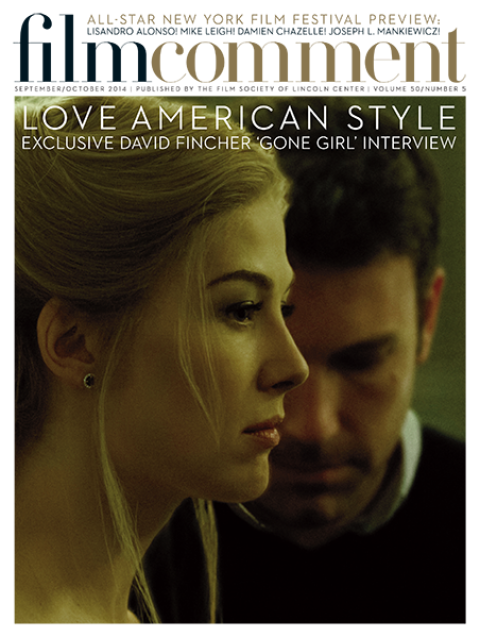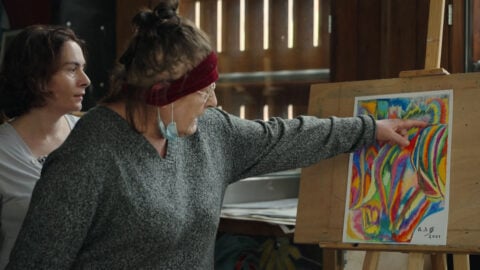
With just two features and a handful of shorts, Hélène Cattet and Bruno Forzani have nailed down a unique recipe for meta-giallo, served with a piquant retro reduction and splashed on a bed of Freudian barley. This new film comes on like a firehose of ironic style, paintbox flourishes and slivered reflections, Art Nouveau designs, and stop-motion still montages, edited together in a rambunctious associative flow that doesn’t tell a story so much as arterially spray one across a sumptuously papered wall.
Sometimes The Strange Color of Your Body’s Tears—the Gerard Manley Hopkins–esque title suggests more of a stylistic attitude than any tip-off to the plot—plays like five Dario Argento movies spliced together into a dreamy music video epic. But the filmmakers’ winking fusion of homage, subjective slipperiness, and outrageous genre gotchas is obviously a cohesive vision, answering the artists’ obsessions.
To what end, though? Cattet and Forzani’s aesthetic is there for its own sake, clearly, as any attempt at synopsis will demonstrate. The couple’s specialty is mustering lurid menace and occult apprehension without much of anything going on. Then things start going on: Dan Kristensen (Klaus Tange) arrives at his impossibly swanky Art Nouveau apartment from a business trip to find the door locked from the inside and his wife missing. That he searches for her within the very strange building he lives in, and enlists a detective (Cattet/Forzani vet Jean-Michel Vovk) to help him, are just about the only things we can say “happen” for sure. The details of the husband’s struggle, of the voyeuristic-paranoid stories recounted by other characters, the identities of various (naked, desired, homicidal, murdered) women we encounter, and the sequence of surreal events are all stirred into a hallucinated stew that’s either the protagonist’s fracturing consciousness or the filmmakers’ zesty postmodern gameplaying or both. Once Dan begins appearing to himself over and over again as a succession of doppelgänger interlopers who must be knifed in the shadows—and thereafter crawls behind the walls and under his own skin, to eviscerate himself from the inside out—you don’t search for a diegetic life buoy to hold on to. You just let the conjuring act roll on.

Even for dramaturgical die-hards, the free-flowing invention and surprising details are hard to resist, from the tiny march of the hatbox maggots to the vaginal cranial wounds to the Mucha pillow-splays of women’s hair. In the meantime, the signature giallo moves are never ignored: the single drop of blood falling in space, the schwing of a switchblade. The roiling soundtrack is comprised almost entirely of borrowed giallo scores from the likes of Ennio Morricone, Alessandro Alessandroni, and Riz Ortolani (a “guest director” credit goes to Peter Strickland, who apparently donated a scream from Berberian Sound Studio). It’s all sensational surface, all visual and metaphorical tango steps, which can hardly be a criticism when Cattet and Forzani are so explicit about their worship of giallo reflexes and the lush disjunctures at the heart of genre movies in general. Still, Strange Color can be exhausting, as a distended music video would be—it knows no modulation, no thoughtful ebb of narrative information, no variety in the rhythm of its attack. Cattet and Forzani may become a major force when they manage to harness their overflowing tank of movie-movie love to a story with grown-up resonance and organic progression.
At the same time, who can gripe? Cinemaniac brio like this is hard to come by these days, and Strange Color is vividly confident in its borrowed materials and the vigorous workout it puts them through. In the end we’re left with the possibility that the film could be considered a wry art installation/essay on modern anxieties, not an attempt at expressing them. More’s the better.








